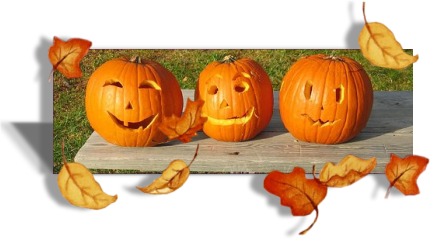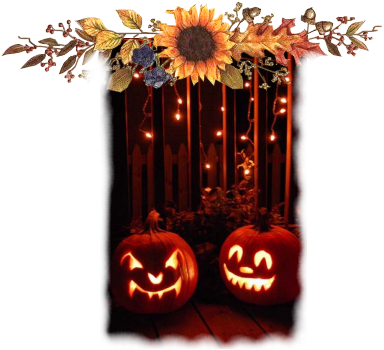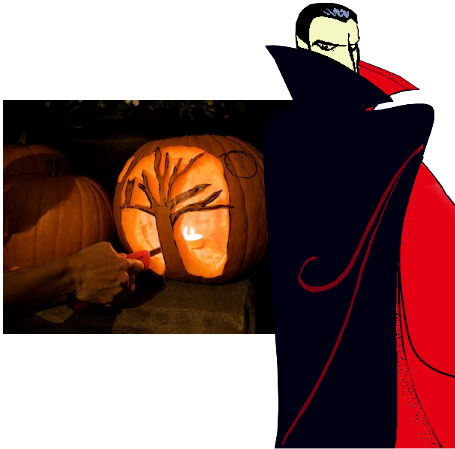

For today's stroll you might need a pair of boots, we are heading on over to the pumpkin patch to pick out the best pumpkins for carving...come on along and learn how this all got started.
THE HISTORY OF PUMPKIN CARVING
Back in 1987 our family's history of pumpkin carving got started on Corey's very first Halloween. Uncle Carl was the master carver and came over every year and carved pumpkins for Corey. He would carve Corey's name on one in big letters and the other ones would have Batman or whatever carved into them. Corey watched every year until he was old enough to join in the fun...now he's the master carver around here! (His specialty is "The Scream Face".)

But how did this all get started?


A pumpkin is not a vegetable; it's a fruit. Pumpkins come from the cucurbitaceae family and is related to melons, squashes, zucchini and cucumbers. A very large number of the pumpkins grown today are for the purposes of carving during Halloween. Pumpkins are very difficult to find outside of the fall season.

Today, pumpkin carving continues to be a big part of the Halloween tradition, extending across North America, Ireland, parts of England, and in Europe in some places. Patented pumpkin carving saws have been designed, expert pumpkin carvers have appeared on nation-wide television shows, and even software for creating stencils has been developed (no kidding!).
Me personally I stick to the old fashioned basic carving a few triangles for the eyes and nose and whatever I can figure out for the mouth...but to each his own.


Strolling Down Memory Lane With Candy - Main Page